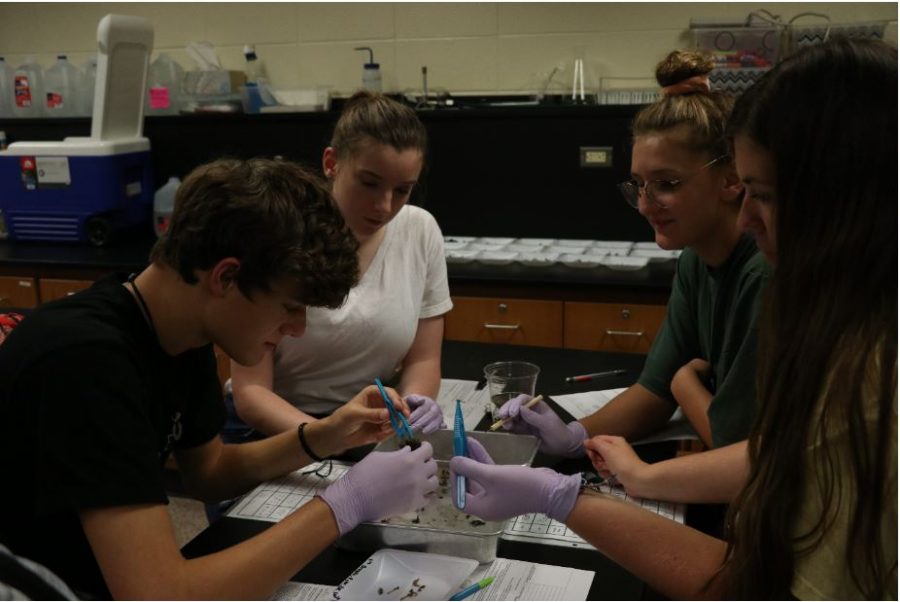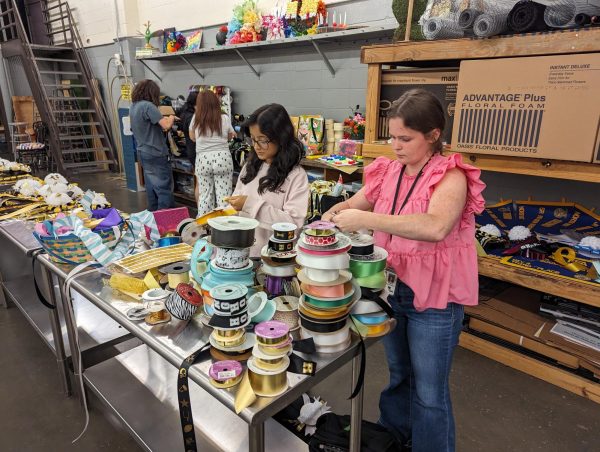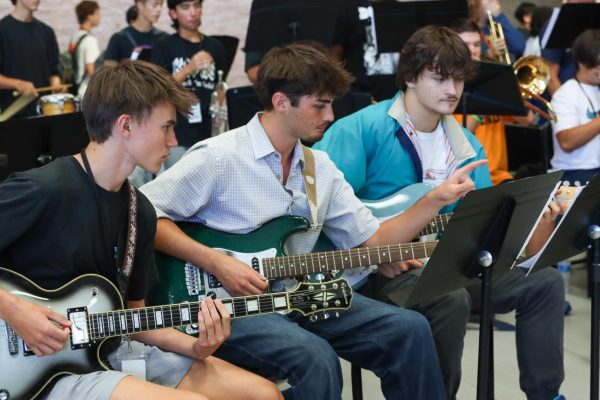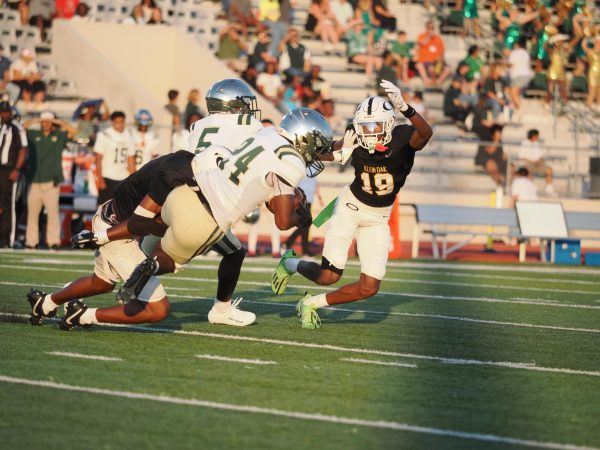Going Bananas for A.P.E.S.
AP Environmental Science spreads awareness through hands-on learning
Seniors Ryan Pope, Braydin Sims, Emily Mack, and Zoe Swisher inspect owl pellets for bones to identify the bird’s prey.
A sea of lab coats and scientific equipment fill the classroom. Discussing nutritional intake and digestion, students who partake in the experiment take turns dissecting regurgitated owl pellets. Conducted in Advanced Placement Environmental Science (A.P.E.S.), one of the five AP science courses offered at Klein Oak, unusual labs like these are frequently used to further learning.
Taught by Gayle Gregory, A.P.E.S. centers around the natural sciences. The curriculum includes topics such as conservation, ecosystems, geology, and energy pollution. However, A.P.E.S. differs from physics, chemistry, and biology in a marked way. While the other subjects exist mostly in their own sphere, this class brings together information from all of them to paint a bigger picture.
“It’s actually a very interdisciplinary class. A lot of people don’t realize that it’s pretty much all of the sciences you’ve taken,” Gregory said. “We do some biology, which is what we start with, and we get into chemistry with a little bit of physics concepts. It’s not until later that we start hitting the true environmental topics.”
The owl pellet dissection lab is one of many conducted throughout the course with the purpose of spreading awareness of connections between organisms in the world. Through the lab, students were to discover how actions of one organism can impact the food webs they interact with.
“I really liked the owl pellet dissection. That may sound gross, but it was super cool,” senior Kaitlyn Samuel said. “I learned a lot from it, and it was shocking how many bones they swallow.”
Besides the owl pellet lab, A.P.E.S. students previously underwent a laboratory designed to measure the respiratory rates of fish. In fact, labs and interactive activities make up the bulk of work in the class.
“I would say around 70 percent of class time we’re either doing a hands-on activity or an actual lab with equipment and safety precautions like aprons and goggles,” Gregory said. “I’m not big on PowerPoint lectures while the class falls asleep, so a lot of the time we’re doing something interactive.”
A.P.E.S. is also less arithmetically focused than the core AP sciences. However, as an Advanced Placement class, it carries its own set of challenges.
“I would recommend making sure that you have time to do the rather frequent homework assignments and don’t underestimate the amount of work,” senior Alec Bagby said.
The pass rate for the AP Environmental Science exam is nearly 50 percent, reflecting that the tricky nature of the subject doesn’t make success impossible. However, with elements from so many different courses, it can be challenging for students to keep it all straight and achieve a perfect score.
“It’s one of the hardest to score a four or five on, which comes back to how interdisciplinary it is. However, this year, we’ll see if the results come up any,” Gregory said.
College Board recently made changes to the A.P.E.S. exam including the removal of 20 multiple choice questions and one free response. They also lowered the time limit for the exam, but it balances out with the fewer problems.
Furthermore, to make the hands-on activities and class content easier to manage, a lot of the work in A.P.E.S. is done in pairs. This allows for other perspectives on assignments and another person to turn to.
“It’s a really cool experience in class, and I enjoy it so much. I feel like having partners for classwork makes it way more manageable. I also really love the other kids and the teacher,” Samuel said.
By the end of the year, the A.P.E.S. teacher has high hopes for the knowledge learned in class.
“I hope students walk away with awareness,” Gregory said. “Awareness towards the small changes they can do every day to make the world a little more sustainable.”









